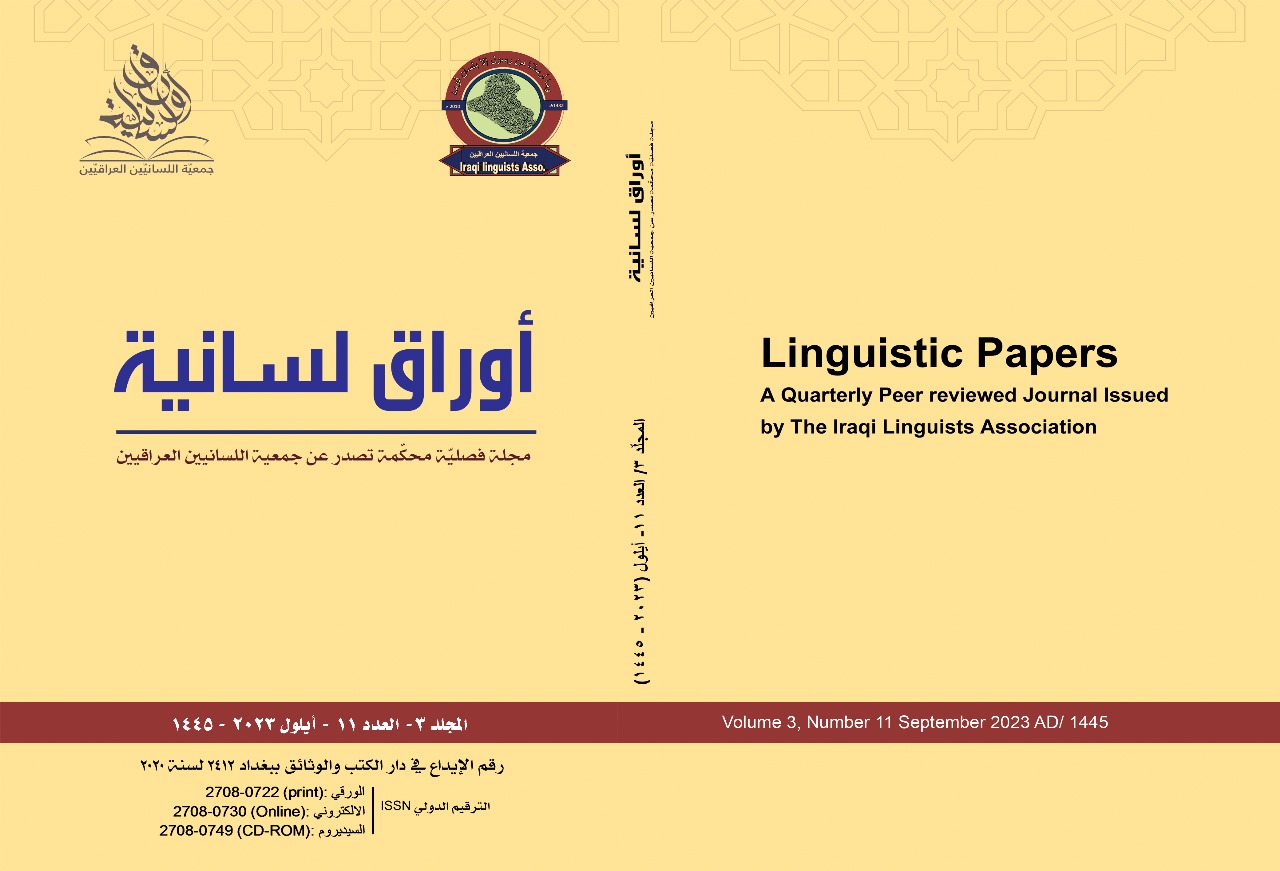Abstract
This study aims to shed light on communication in the discourse of the Bedouins by analyzing heritage texts using the communicative action theory developed by Jürgen Habermas. This theory concerns understanding how rational communication can contribute to achieving understanding and social harmony. The primary objective of the research is to apply Habermas\'s theory to heritage texts to explore the social and cultural dimensions reflected in the speech acts of the Bedouins.
The discourse of the Bedouins here refers to their prose, which expresses their values, standards, and different positions through the daily use of language. These texts provide a clear picture of their social and cultural life and daily interactions. These texts were selected based on criteria that include containing prose, brevity, and explicitly indicating that the speech is from the Bedouins.
The study adopted an analytical approach, analyzing a set of heritage texts using Habermas\'s concepts, such as communicative rationality, the ideal speech situation, and validity claims. The research addressed the topic through three main axes, covering the analysis of heritage texts, the application of Habermas\'s theory to them, and exploring the social and cultural dimensions of these texts.
The discourse of the Bedouins here refers to their prose, which expresses their values, standards, and different positions through the daily use of language. These texts provide a clear picture of their social and cultural life and daily interactions. These texts were selected based on criteria that include containing prose, brevity, and explicitly indicating that the speech is from the Bedouins.
The study adopted an analytical approach, analyzing a set of heritage texts using Habermas\'s concepts, such as communicative rationality, the ideal speech situation, and validity claims. The research addressed the topic through three main axes, covering the analysis of heritage texts, the application of Habermas\'s theory to them, and exploring the social and cultural dimensions of these texts.
Keywords
Bedouins
Communicative Action
discourse
Habermas's Theory
Validity Claims
Abstract
تسعى هذه الدراسة إلى تسليط الضوء على التواصل في خطاب الأعراب من خلال تحليل نصوص تراثية باستعمال نظرية الفعل التواصلي التي وضعها يورغن هابرماس. تُعنى هذه النظرية بفهم كيف يمكن للتواصل العقلاني أن يُساهم في تحقيق التفاهم والتوافق الاجتماعي. الهدف الرئيس من البحث هو تطبيق نظرية هابرماس على نصوص تراثية لاستكشاف الأبعاد الاجتماعية والثقافية التي تعكسها أفعال الكلام ومطالبات الصلاحية وهي الفكرة الرئيسة في النظرية .
خطاب الأعراب هنا يشير إلى الكلام النثري لديهم، والذي يعبر عن قيمهم، معاييرهم، ومواقفهم المختلفة من خلال استعمال اللغة بشكل يومي. هذه النصوص تقدم صورة واضحة عن حياتهم الاجتماعية والثقافية وتعاملاتهم اليومية. وقد اختيرت هذه النصوص بناءً على معايير تتضمن كونها من الكلام النثري، وتتسم بعدم الإطالة، والتصريح بكون الكلام للأعراب.
اعتمدت الدراسة على منهج تحليلي، إذ تم تحليل مجموعة من النصوص التراثية باستعمال مفاهيم نظرية هابرماس، مثل العقلانية التواصلية، الوضع المثالي للكلام، ومطالب الصلاحية. تناول البحث الموضوع خلال ثلاثة محاور رئيسية، تُغطي تحليل النصوص التراثية، تطبيق نظرية هابرماس عليها، واستكشاف الأبعاد الاجتماعية والثقافية لهذه النصوص.
خطاب الأعراب هنا يشير إلى الكلام النثري لديهم، والذي يعبر عن قيمهم، معاييرهم، ومواقفهم المختلفة من خلال استعمال اللغة بشكل يومي. هذه النصوص تقدم صورة واضحة عن حياتهم الاجتماعية والثقافية وتعاملاتهم اليومية. وقد اختيرت هذه النصوص بناءً على معايير تتضمن كونها من الكلام النثري، وتتسم بعدم الإطالة، والتصريح بكون الكلام للأعراب.
اعتمدت الدراسة على منهج تحليلي، إذ تم تحليل مجموعة من النصوص التراثية باستعمال مفاهيم نظرية هابرماس، مثل العقلانية التواصلية، الوضع المثالي للكلام، ومطالب الصلاحية. تناول البحث الموضوع خلال ثلاثة محاور رئيسية، تُغطي تحليل النصوص التراثية، تطبيق نظرية هابرماس عليها، واستكشاف الأبعاد الاجتماعية والثقافية لهذه النصوص.
Keywords
الفعل التواصلي، نظرية هابرماس، الأعراب، الخطاب، مطالب الصلاحية
